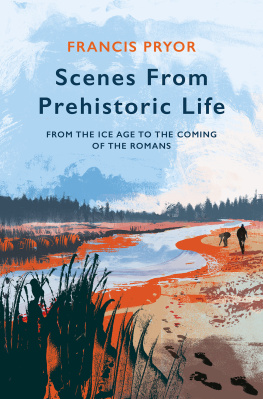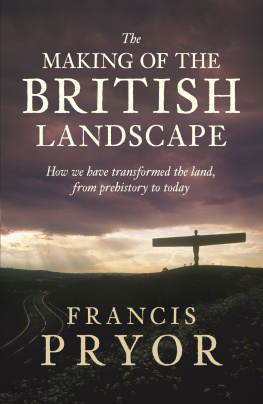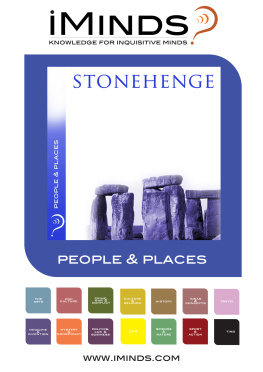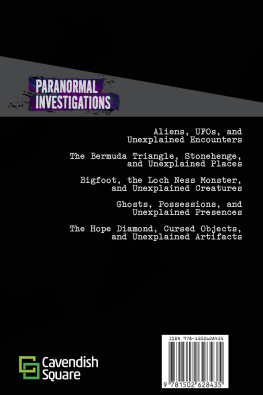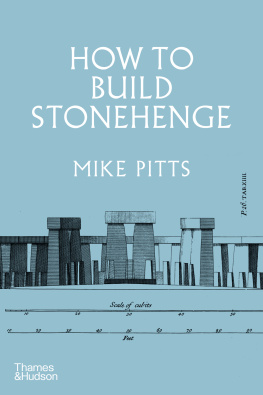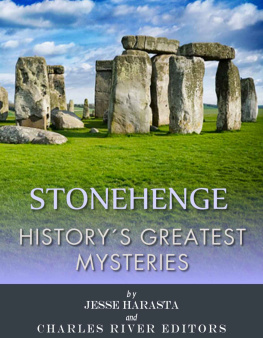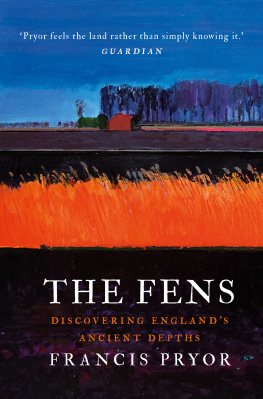STONEHENGE
Francis Pryor
www.headofzeus.com

Perched on the chalk uplands of Salisbury Plain, Stonehenge is as unmistakeable as it is enigmatic. For medieval chroniclers it was the home of the wizard Merlin; for the antiquarian John Aubrey it was a place of Druidic ceremonial. Constable and Turner painted it. Twenty-first century neopagans flock to worship at it.
But it is the efforts of archaeologists that have done the most to elucidate the mysteries of Britains most celebrated prehistoric monument. Francis Pryor draws on the latest research to tell the story of the construction of Stonehenge between 3000 and 1500 BC. The building of the stones coincided with a time of slow but significant change in prehistoric Britain: populations were growing; farming was becoming more intensive; an infrastructure of roads, rivers and settlements was being developed. Stonehenge was a source of stability for our early Bronze Age ancestors in an age of cultural transformation.
Accessible and authoritative, Stonehenge offers a fascinating and revelatory account of the history and meaning of a sacred landscape.

Stonehenge c .1827 by J. M. W. Turner (17751851).

A sixteenth century drawing of Stonehenge in Corte Beschryvinghe van Engheland, Schotland, ende Irland (Description of England, Scotland and Ireland).
FOR GEOFF WAINWRIGHT, WHOSE INNOVATIVE RESEARCH INTO HENGES HAS INSPIRED TWO GENERATIONS
Contents

A photograph of visitors taking a rest at Stonehenge in 1867.
:
WHY STONEHENGE MATTERS
Stonehenge is an extraordinary monument in its own right. Its massive shaped stones and unique lintels instantly catch ones attention and hold it. It was constructed at a time when British and north European prehistoric societies were passing through a crucially important phase of development. Sites like Stonehenge provided the stability that enabled communities of the third millennium bc to take Britain from a developing to an established social system with more clearly defined regional identities. It was a period which saw the population grow, supported by improved and more intensive farming. This in turn led to a developed landscape, which was serviced by a complex infrastructure of roads, paths, streams, rivers, farms and settlements.
In this book I will try to show how Stonehenge formed an integral part of the quite rapidly evolving social and ideological system of the time. And we should bear in mind that although the site would always have been very special, it was never a one-off although unique in its complexity and construction, it was always part of a broader and widespread tradition of British stone and timber monuments. Just like a medieval cathedral today, it would have been awe-inspiring but comprehensible to a person in the Neolithic or Bronze Age. Much later, when that understanding of its purpose and role had vanished, it acquired a mystical/magical quality that even recent research has found hard to shift.
There have been many books written about Stonehenge and most of them say something new. Recently the Stonehenge landscape has been the subject of intensive research by a number of projects, all of which have made significant discoveries. In this book I will draw heavily, for example, on the Stonehenge Riverside Project, organized by Mike Parker Pearson of University College London and by colleagues in the universities of Bournemouth, Manchester and Southampton. The science of geophysics uses radar and other impulses to see below the surface and several teams of prospectors, organized by English Heritage and the Stonehenge Hidden Landscapes Project, among others, have made some truly astonishing discoveries.
I will of course cover this new research as best I can, but what, it might reasonably be asked, do I bring to this richly covered table? Here I have to confess that my own research and experience in British prehistory has been largely confined to the low-lying Fenlands of eastern England landscapes that could hardly be less like those of Salisbury Plain or the Marlborough Downs. True, I have excavated henges, but these were made of wood, not stone, and cannot readily be compared with Stonehenge. Having said that, they also occurred within larger, so-called ritual landscapes (see Chapter 3), that do have much closer parallels with what was happening on Salisbury Plain.
I suppose my most relevant experience came from the excavation of a site known as a causewayed enclosure. Etton was excavated in great detail between 1982 and 1987 and it still remains the best-preserved site of its kind yet found in Britain (it is discussed extensively in Chapter 3 and Appendix II). Causewayed enclosures are several centuries earlier than places like Stonehenge, but they were the first communal shrines and meeting places in prehistoric Europe and they hold the clues to the powerful motives that made early communities come together and construct a huge variety of barrows, henges and other ceremonial sites. These individual sites formed the basic building blocks of the ritual landscapes that would later develop from and around them. And as we will see throughout this book, Stonehenge lay at the centre of the largest and probably the most complex ritual landscape in Britain.
All archaeologists approach their subject from their own perspective, and while I have tried not to let my interest in the origins of Stonehenge bias this book unnecessarily, I also feel I owe it to my readers to give them fresh insights into this most remarkable site. I have to say that I think current theories on the origins of Stonehenge, during a single event, which happened around 2900 BC , are misguided and ignore what we have learnt about the previous millennium of prehistory. So I have suggested here that there was an extended Formative Phase that was at least four centuries long (Chapter 4 and Appendix II). I rather suspect that although this length of time accords with currently available radiocarbon dates, future research may demonstrate that it was an underestimate.
Francis Pryor
21 December 2015
I use the terms prehistory and prehistoric to describe the people, places and events that took place in Britain before the arrival of the Romans in AD

:
RELIGION, LANDSCAPE AND CHANGE
Stonehenge was erected during times of extraordinary change that still profoundly affect the way we live our lives in Europe to this day. And its construction was no accident. Sacred sites like Stonehenge played an important part in providing the social stability that allowed later prehistoric communities to accept and adopt such major innovations as the appearance of the first metals, copper and bronze.
The mysterious but iconic ring of stones on Salisbury Plain that today we call Stonehenge has long been recognized as an ancient shrine or religious site. But it would be a mistake to suggest that prehistoric Britons viewed religion in the same way that we do today. A lot has happened since those far-off times. For a start, the diversity of religions that we now enjoy would not have applied in prehistory. It would also be a mistake to believe that prehistoric Britain indeed prehistoric Europe never changed, or changed very slowly. In fact, the opposite is the case: all modern research is suggesting that the nine millennia that comprise Britains later prehistory were times of near-continuous population growth, which witness the development of houses, farms, villages, tracks, roads, woodland and fields. By 2000 BC sophisticated sea-going vessels were making regular, perhaps daily, trips across the Channel and southern North Sea. And by the final centuries BC we see the appearance of larger communities that are starting to resemble towns.




